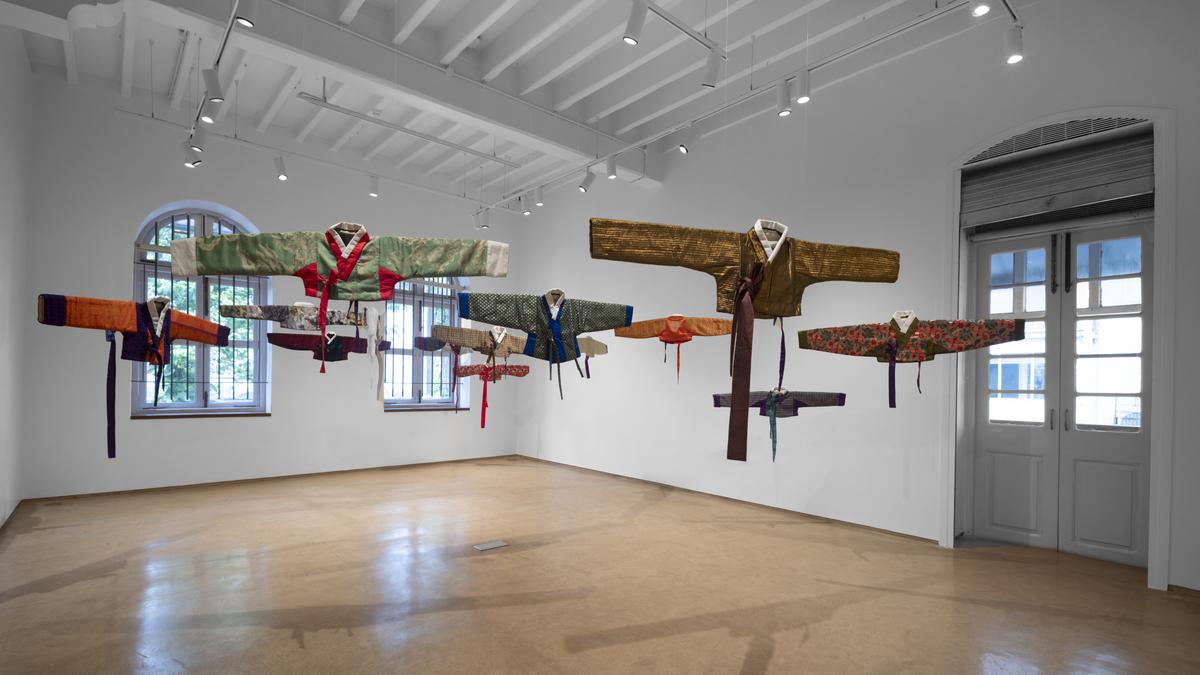My first impression of the Harnai fish market is always chaos. The smell of fish, the sound of fisherwomen shouting and buffaloes lowing, and the sight of brightly coloured nauvari saris, chunky gold jewellery, and heaps of freshly-caught fish. I never know which of my senses to follow first.
It’s also a chaos that I never tire of — ever since I first visited the town in Dapoli, in the south of Maharashtra, in 2012. Every visit is a discovery. But what I keep coming back to photograph are the fisherwomen, under whose strong leadership the market thrives.

Starting work, their nauvari sari tied firmly | Photo Credit: Indrajit Khambe
Theirs is a fascinating blend of traits: from their distinctive attire, the yards of bright oranges, deep greens and bright yellows tucked functionally tight around their legs, to the fresh gajras of mogra, roses and champa in their hair.

The women sport handmade gajras with flowers picked from their backyards | Photo Credit: Indrajit Khambe
Their jewellery reflects the sea, with motifs of fish and other creatures. The women’s style is their own unique form of marketing; it helps them attract customers and stand out in the bustling marketplace to their regulars.

Their jewellery reflects the sea | Photo Credit: Indrajit Khambe

Intricate gold jewellery is a favourite | Photo Credit: Indrajit Khambe
Fights are normal, laughter follows soon after, and it’s a common sight to see them enjoy a well-deserved ice cream at the end of a long day.

Ice cream break | Photo Credit: Indrajit Khambe

A quick breather during the day | Photo Credit: Indrajit Khambe
What is most fascinating, however, is how they continue traditions that are fast dying out elsewhere. Especially bartering. Fishing communities typically live close to the sea, and their houses are clustered together, leaving limited space for cultivating.
So, they barter with women from neighbouring villages, who visit with heaping baskets of seasonal vegetables and fruits such as tendli (ivy gourd), aubergines, mangoes, cashewnuts, and jamun.

Many of the fisherwomen who wear the nauvari today are in their 50s and 60s | Photo Credit: Indrajit Khambe
Daily life at the fish market is full of energy, hard work, and excitement. But change is coming. The younger generation no longer favours nauvari saris; so, the well-dressed women I see today are all in their 50s and 60s. A jetty is also being constructed, which means I will miss seeing buffaloes waiting patiently knee deep in water, as men load fish into the bullock carts.

Skilled and adaptable | Photo Credit: Indrajit Khambe

A snapshot from their day | Photo Credit: Indrajit Khambe
Change isn’t always bad; it will make life at the market easier for its denizens. It will also make for less interesting photos.
The documentary photographer is based in Sindhudurg, near the Goa-Maharashtra border.

 8 hours ago
1
8 hours ago
1






















 English (US) ·
English (US) ·